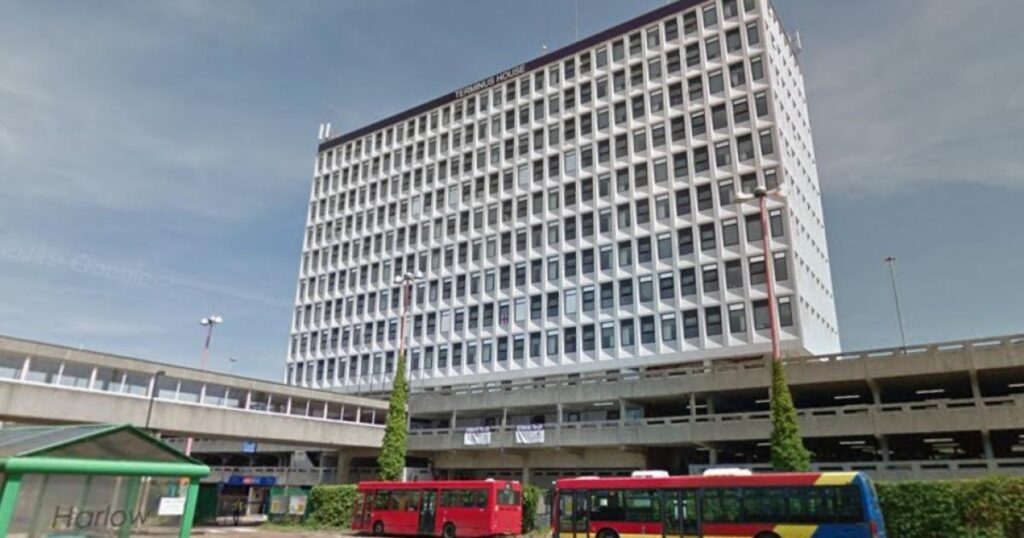The acquisition of Terminus House, described as the council’s most ambitious purchase to date, is part of wider plans to regenerate Harlow town centre.
It follows unanimous approval by councillors on June 5.
Councillor Dan Swords, leader of Harlow Council, said: “We are building Harlow’s future and are on a mission to rebuild our town.
“This is a landmark moment, and our boldest property purchase yet, bringing another significant building and site which will come into council ownership.
“Our vision is clear: to create one of the best town centres in the UK – an exciting, dynamic space that serves people of all ages, at all times of the day.
“Redeveloping Terminus House is a vital step in restoring pride and unlocking Harlow’s full potential.”
Terminus House, a 13-storey building with a six-storey car park, had been used by London boroughs as temporary accommodation, drawing criticism for the strain it placed on Harlow’s services and its town centre.
In 2018, under permitted development rules, the building was converted into housing without planning permission.
The council said this contributed to a rise in crime and put pressure on local infrastructure.
Under the terms of the purchase, current tenants will be relocated into alternative accommodation owned by the building’s current owners, ensuring the property is vacant when the deal completes.
The council will only be able to support Harlow residents who meet its Housing Needs Register criteria.
Those placed in the building by other councils will not be eligible.
The acquisition forms part of the council’s broader regeneration programme, which includes the redevelopment of the bus station and Terminus Street.
The council has already purchased Adams House and Market House as part of its Building Harlow’s Future initiative.
In 2020, Stephen Robinson, leader of Chelmsford City Council, warned against the dangers of poor-quality conversions under permitted development rights.
He said: “We must never have a human warehouse like we have in Terminus House in Harlow.
“That is the danger of permitted development.”




